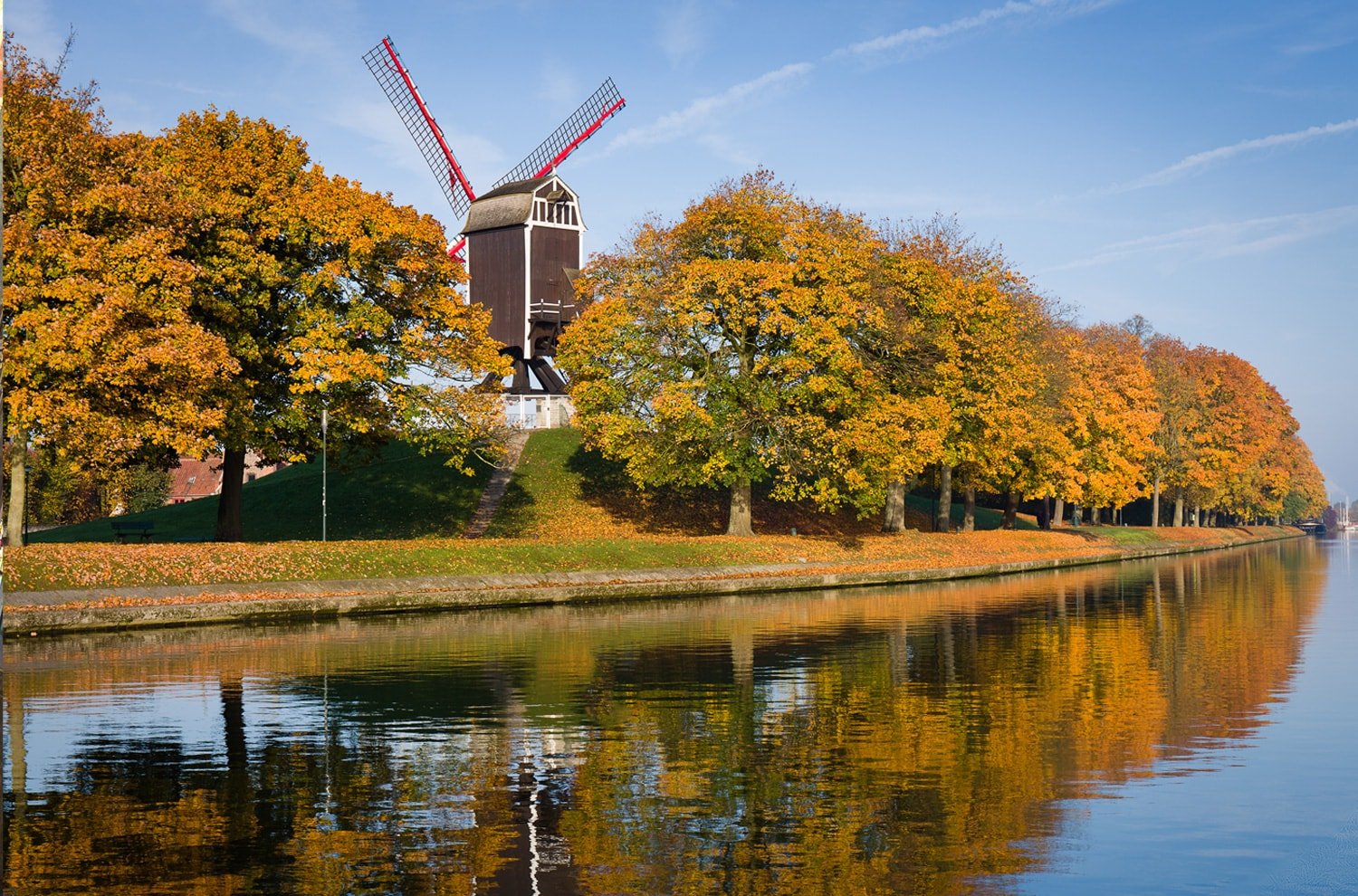Bruges

The cobbled lanes and picture perfect market squares linked by the picturesque canals, historic churches and whitewashed, old, alms houses make Bruges a fairy-tale, medieval town in all its senses. Efforts have been made to retain the town’s medieval looks and preserve the age old charm of gabled houses, beautiful squares and canals for the visitors as tourism is the main industry of the town.
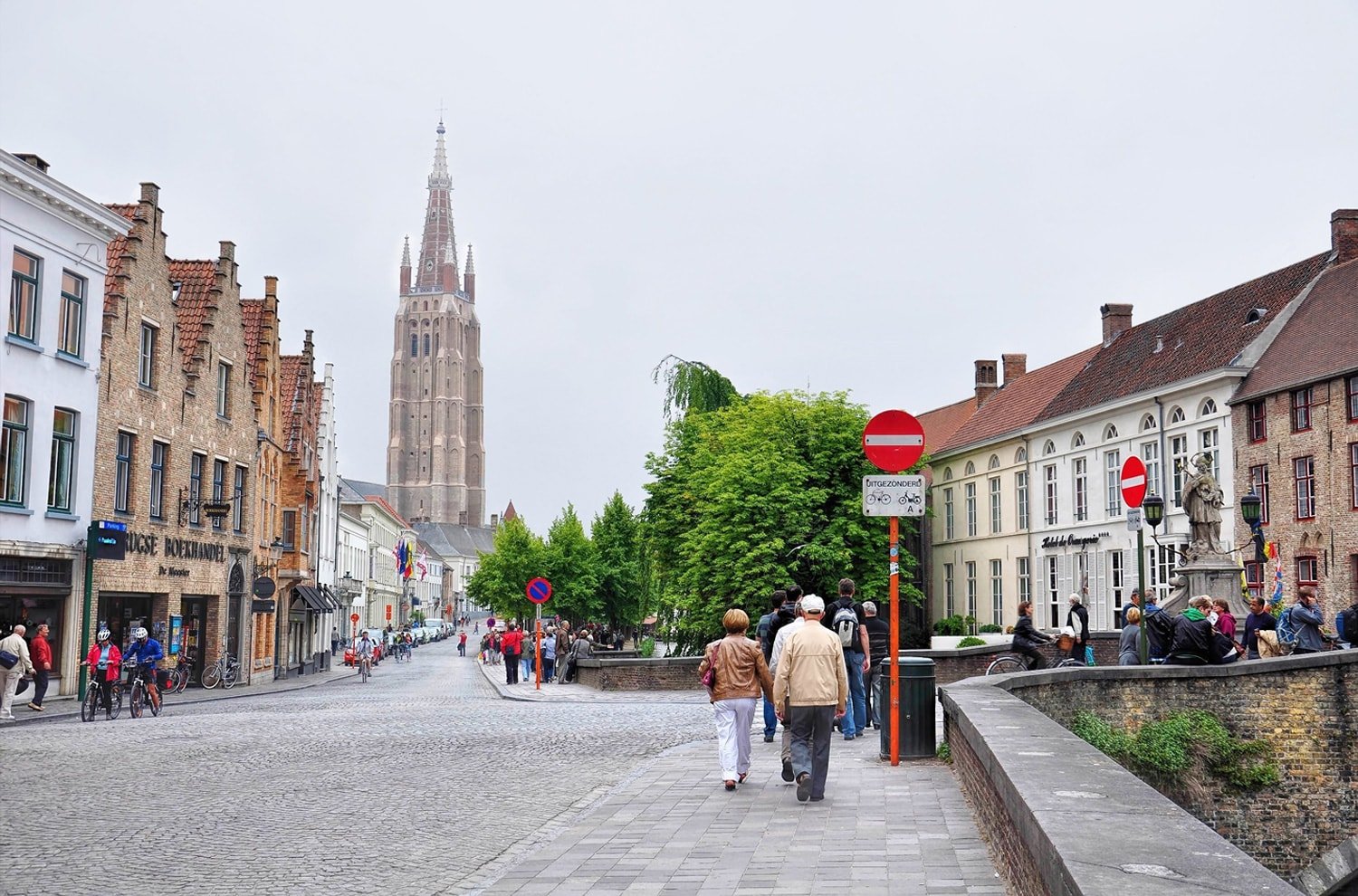
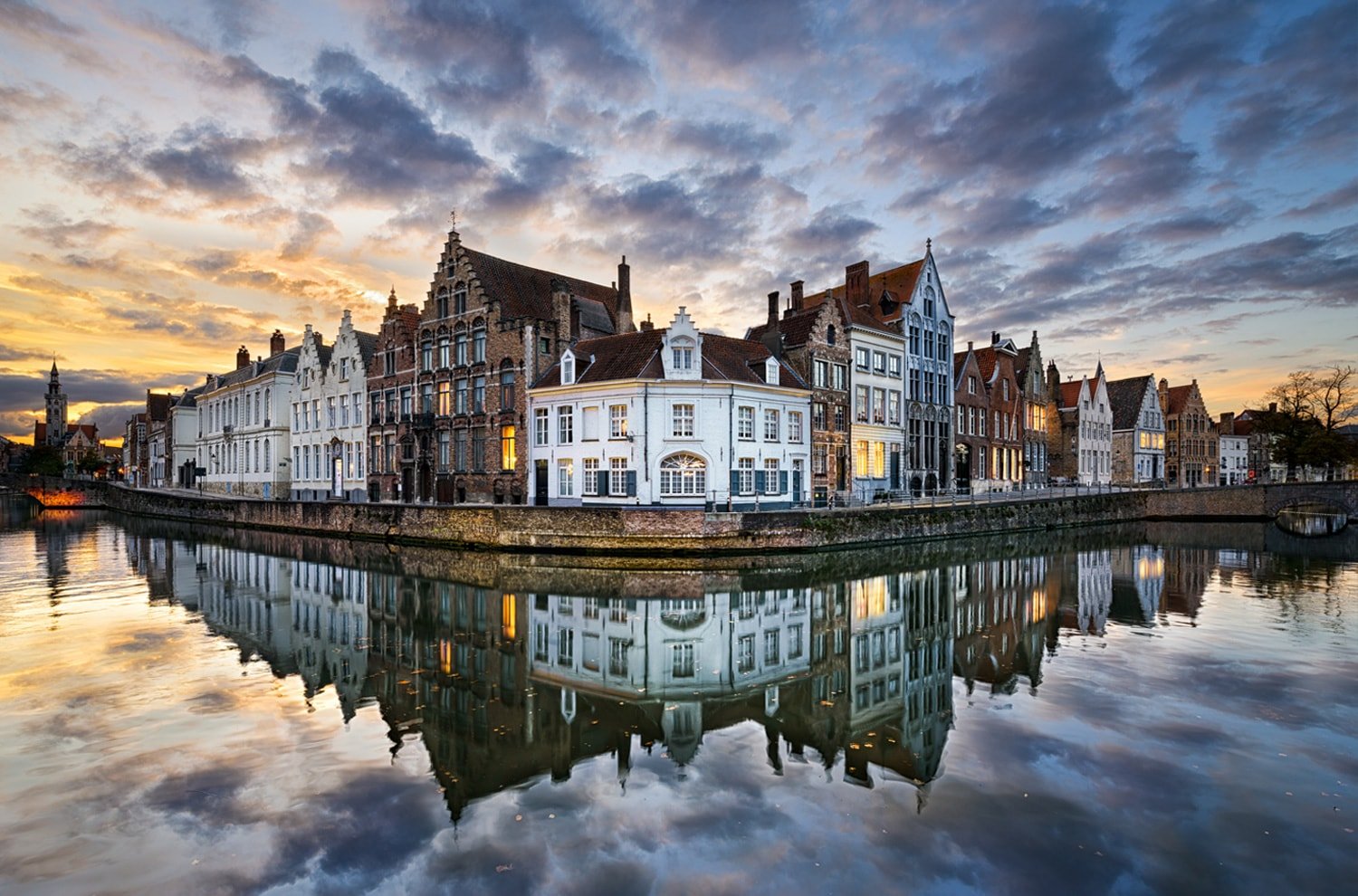
Chocolate business too thrives in Bruges and is more than adequately represented by around 50 stores that sell the best of the chocolate goodies available. Though some are famous chain outlets, most others are shops selling traditionally-made chocolates. They have their guild and a chocolate museum that celebrates the history of cocoa and its final product.
The town’s official name is Brugge (bruhg-guh) in Flemish, though it is mentioned as Bruges in many guidebooks. Making an effort to pronounce the original name will definitely win you more friends.
If ever there was a competition to design a true blue medieval town from scratch, the winner would most probably resemble Bruges. To really experience this unique place, make it a point to stay overnight, in fact a couple of days. At night, floodlighting brings Bruges alive. To avoid weekend tourists who take over the town, try to visit during midweek.

Fans of Hollywood movies and of Colin Farrell in particular, make a beeline to visit Bruges too, as the popular film from 2008 ‘In Bruges’ was shot almost entirely here. It would interest Bollywood fans that a song sequence from the popular movie PK was shot here too.
Whatever the reason, Bruges would charm you as it has been doing so for centuries.
WHEN TO VISIT BRUGES

HOW TO REACH BRUGES
By Air
By Train
GET AROUND IN BRUGES
WHAT TO SEE IN BRUGES
Markt

The valiant deeds of Jan Breydel and Pieter de Coninck, who led the commoners of Flanders on their famous but short-lived victory over the aristocrats of France, is commemorated by a memorial in the centre of the Markt.
A provincial government house and a post office, which is an excellent example of Burgundian Gothic, stands at the east side of the Markt. The north and the west sides of the square are lined by old guild houses which are famous for their step-gabled facades and have cafes on their ground floor that have spilled over to the sidewalks too.
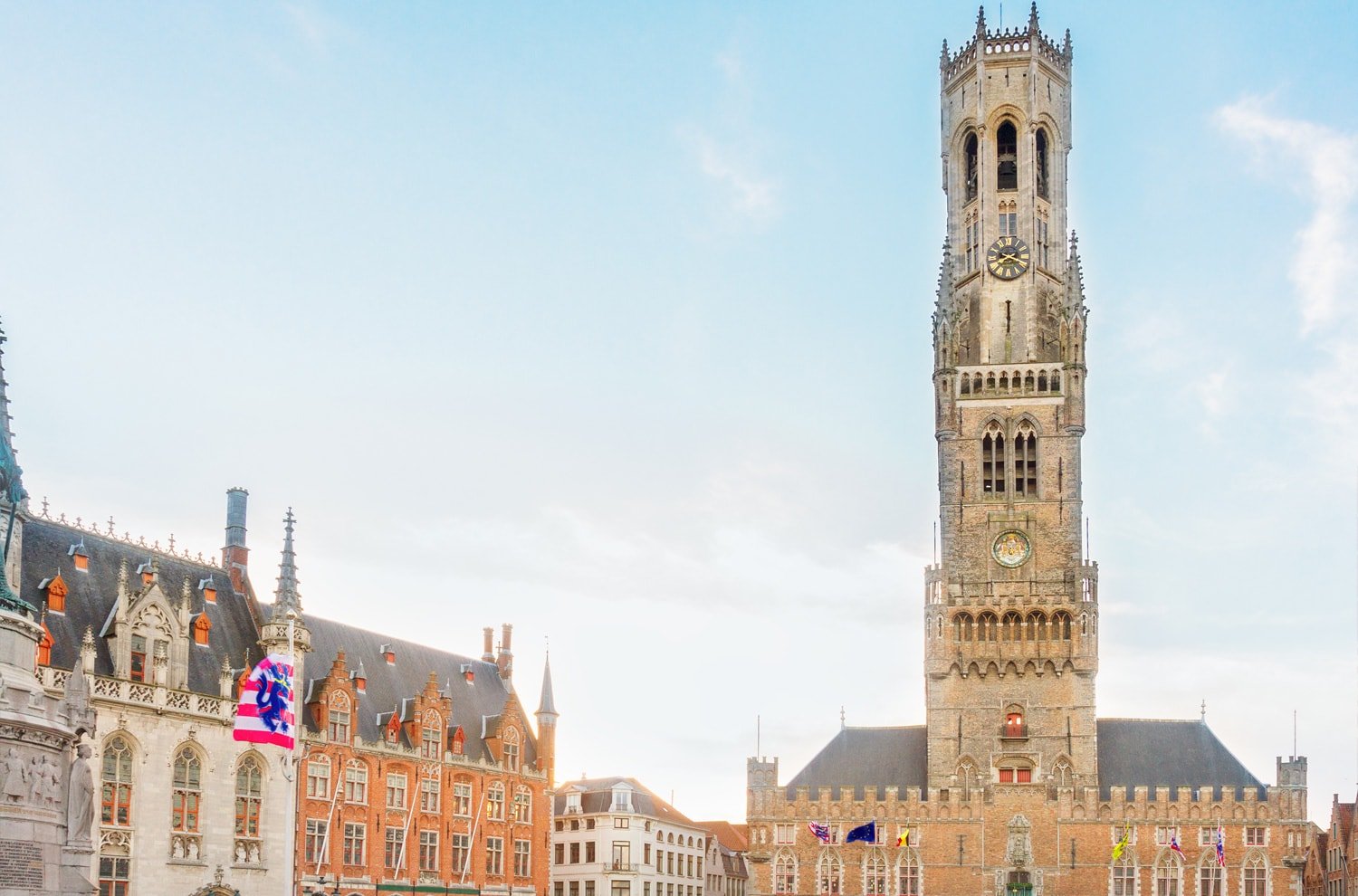
The valuables of Bruges that used to be stored in the second floor that housed the treasury have now been shifted to the 47-bell carillon, which was recently installed with new bells in 2010. Interestingly, the base of the medieval belfry houses a gallery with a permanent collection of sketches and watercolours by the maverick 20th century artist, Salvador Dali.
An interesting albeit expensive and touristy option that could be indulged in are the half hour rides offered by horse-drawn carriages, which includes a short stop at the Begijnhof, costing euro 39 plus
Historic Centre of Bruges

UNESCO has announced the historic centre of Bruges a World Heritage site since 2000, for its outstanding efforts in keeping the medieval historic elements of the town intact, in spite of the technological evolutions around. The medieval buildings are built aside canals or cobblestone paths that give the area an old world feel. Goods like leather, fish, etc., were housed in these buildings in medieval times by merchants. Now these buildings house cafes, boutiques and art galleries.
Groeningemuseum
One of the most celebrated artwork in the museum is Jack van Eyck’s Madonna with Canon Van der Paele, with which he attained artistic immortality for achieving excellent texture and depth through multiple layers of oil and varnish.
A nondescript medieval gate and a small park beyond it belies the invaluable assets housed in this museum. It takes a full morning or afternoon to tour the museum entirely. An audio guide is available in English.
Open daily between 9:30 a.m. and 5 p.m., the museum charges an entrance fee of 8 euros.
The museum is only a few minutes’ walk from the Markt.
Burg
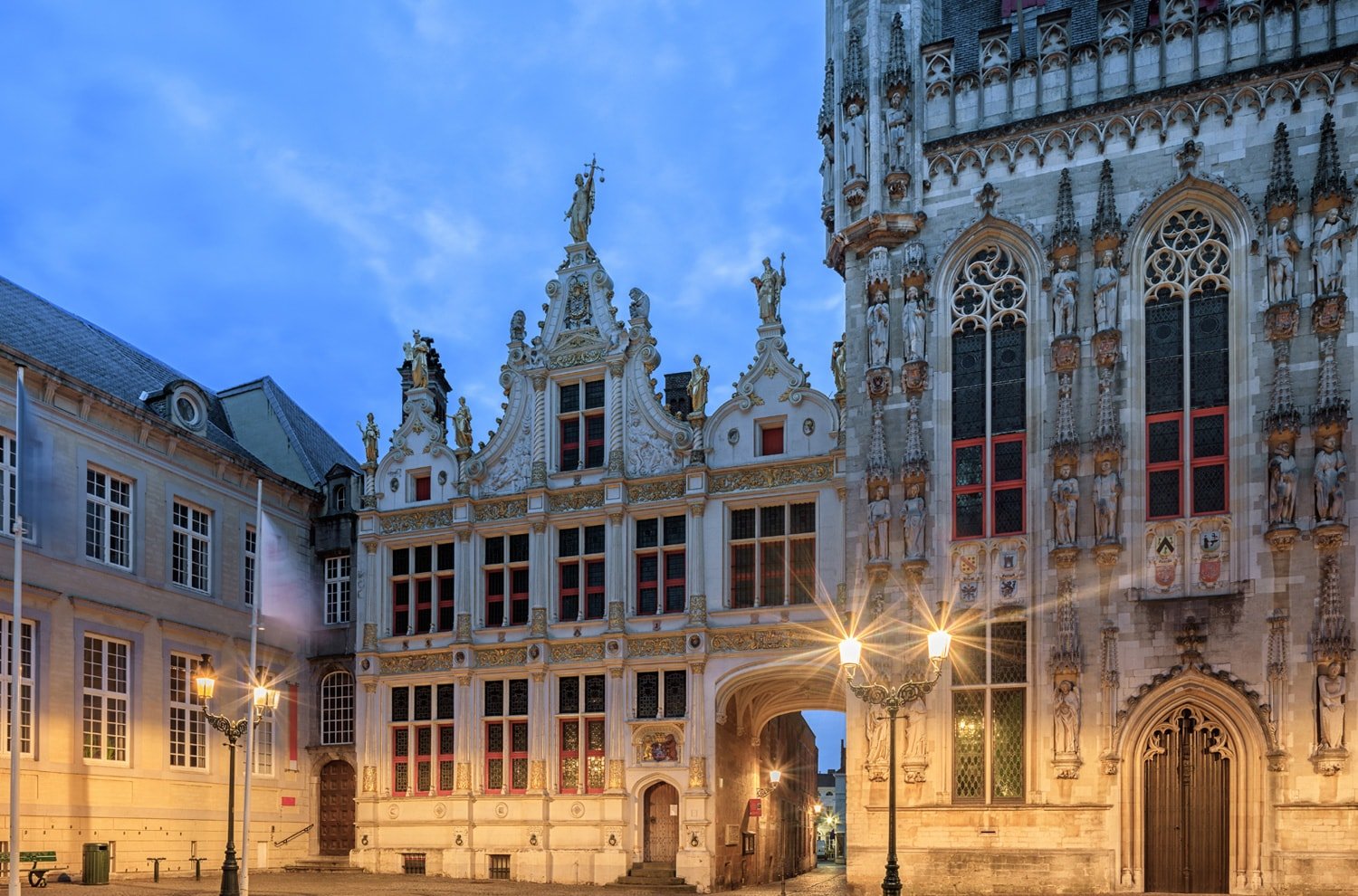
The Old Civil registry (1537), which was once the old court house, stands next to the Stadhuis, the Gothic town hall of Bruges. The Voormalige Civiele griffie with its 15th century front gable and Heilig Bloed Basiliek (the Basilica of the Holy Blood) are nearby.
Hospitaalmuseum – Memling Museum
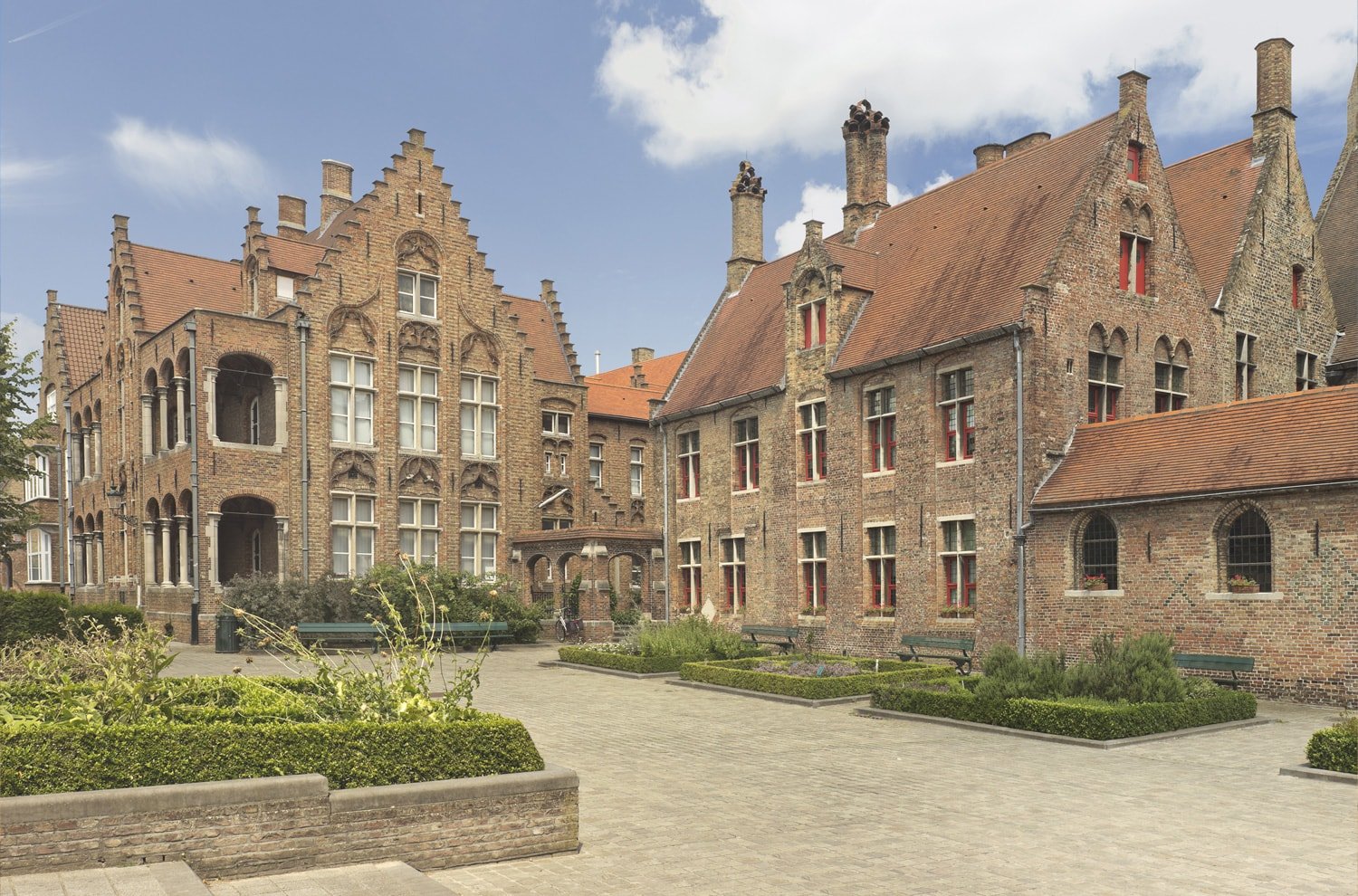
Six masterpieces of the 15th century artist Hans Memling are what have made this museum famous. The reliquary of St. Ursula requires special mention. The gilded oak reliquary resembles a mini Gothic cathedral painted with scenes from the life of St. Ursula.
Ursula was an extremely devout Breton princess who was betrothed to a pagan prince. She agreed to marry him on the condition that she could go to Rome on a pilgrimage along with 11,000 virgins via the historic cities of Cologne and Basel. Unfortunately, on their way back, the entire entourage including Ursula and her betrothed, were massacred by the Huns.
Church of Our Lady
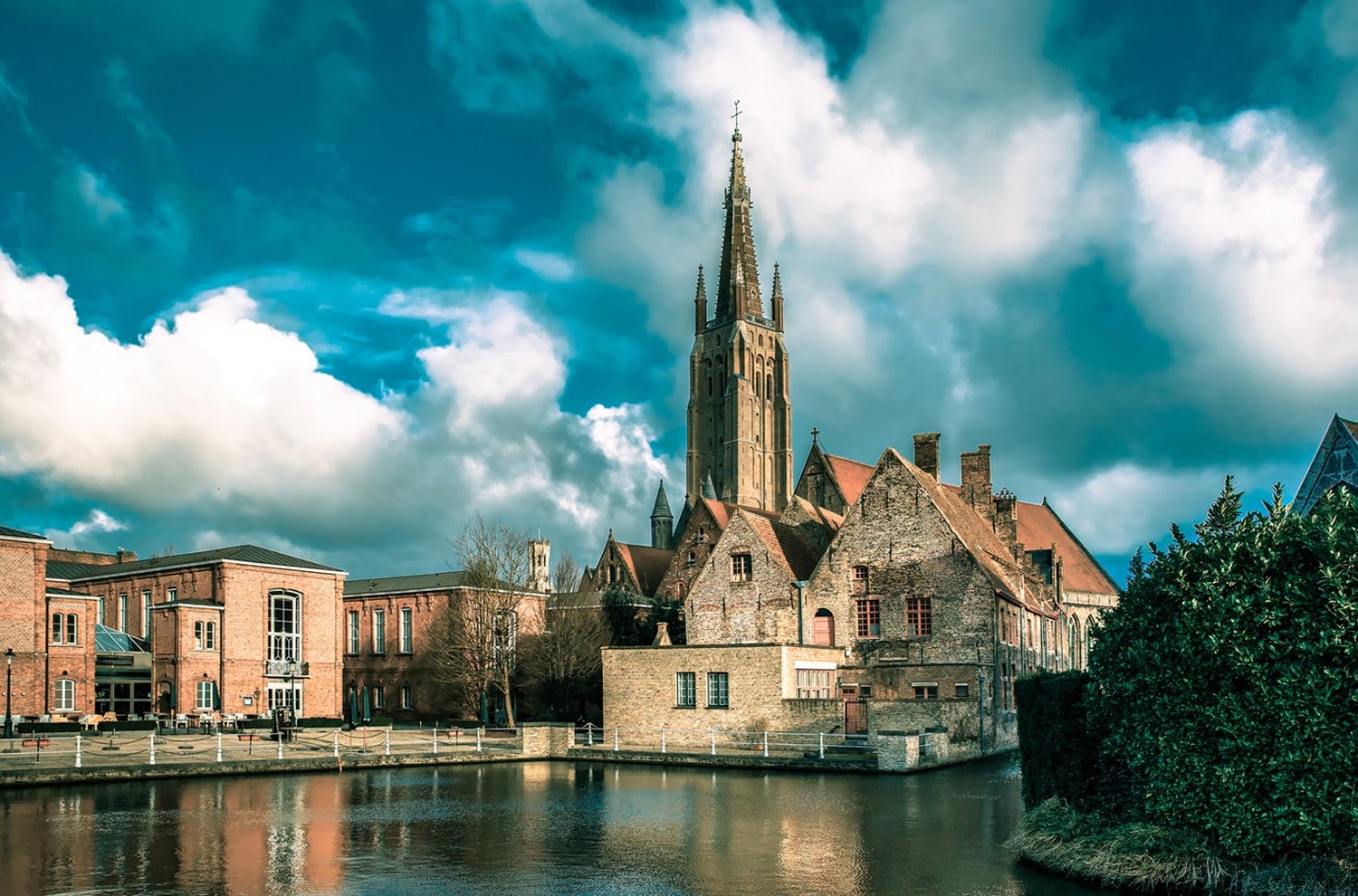
Michelangelo’s ‘Madonna and Child’ sculpture is the most famous treasure of this church. The famous church and the sculpture features prominently in the movie, Monumental Men. After Michelangelo’s Pietà in Rome was attacked in 1972, this sculpture was placed behind bulletproof glass and can be viewed only from a distance of 15 feet.
Tombs and a couple of mausoleums in the region are worth a visit. The name of the church, Onze-Lieve-Vrouwekerk, means Church of Our Lady.
De Halve Maan Brewery
Minnewater Lake
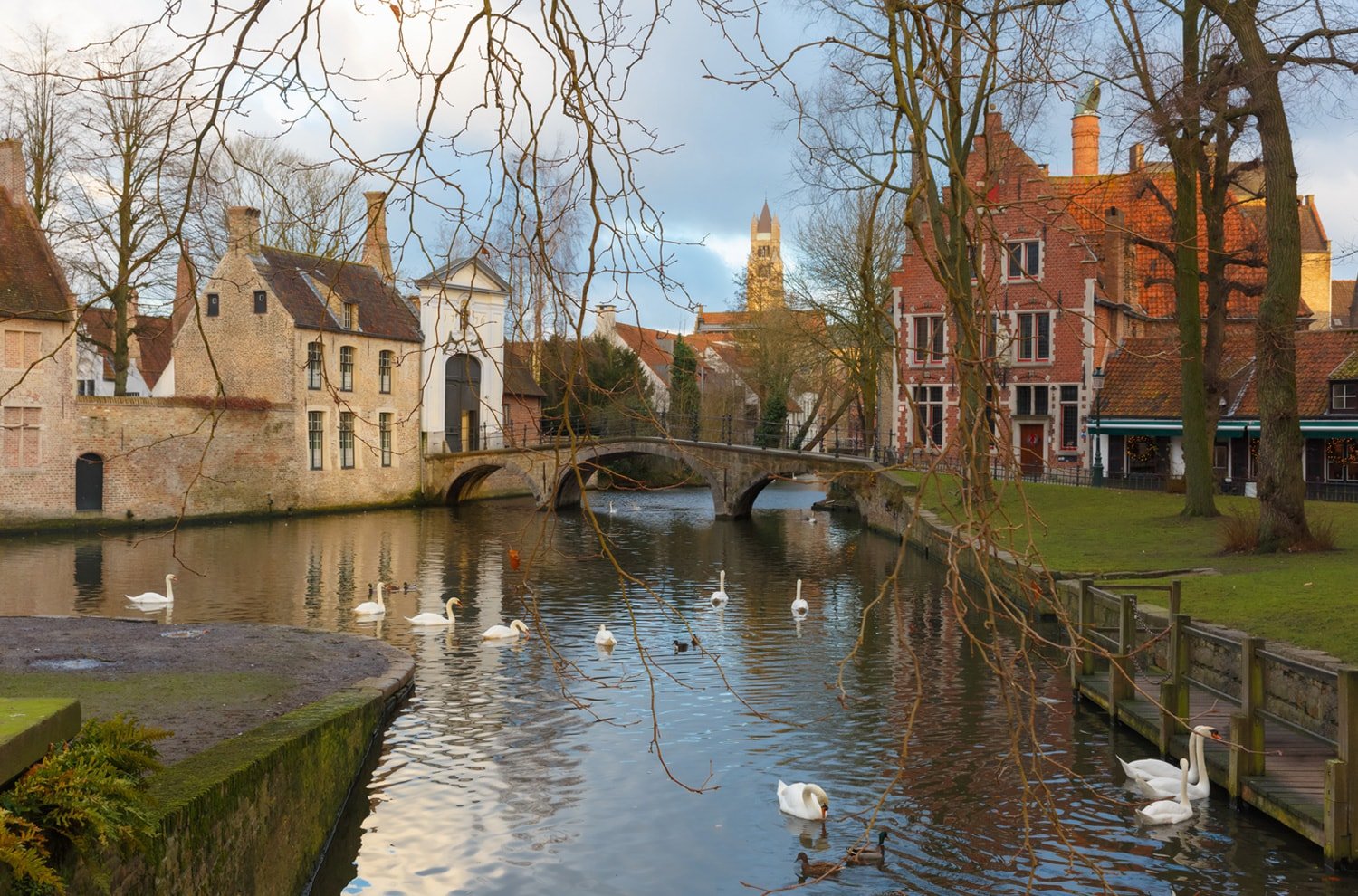
South of the De Halve Maan brewery lies the Minnewater Lake (‘Lake of Love’), a beautiful water body bordered by canals. Together with the swans in the lakes, the weeping willows, park benches and the walking paths, enhance the charming ambience. Autumn changes the colour of the willow leaves and presents a wonderful view. Visitors enjoy its romantic atmosphere and beautiful views.
The Beguinage (also called Begijnhof)
Basilica of the Holy Blood
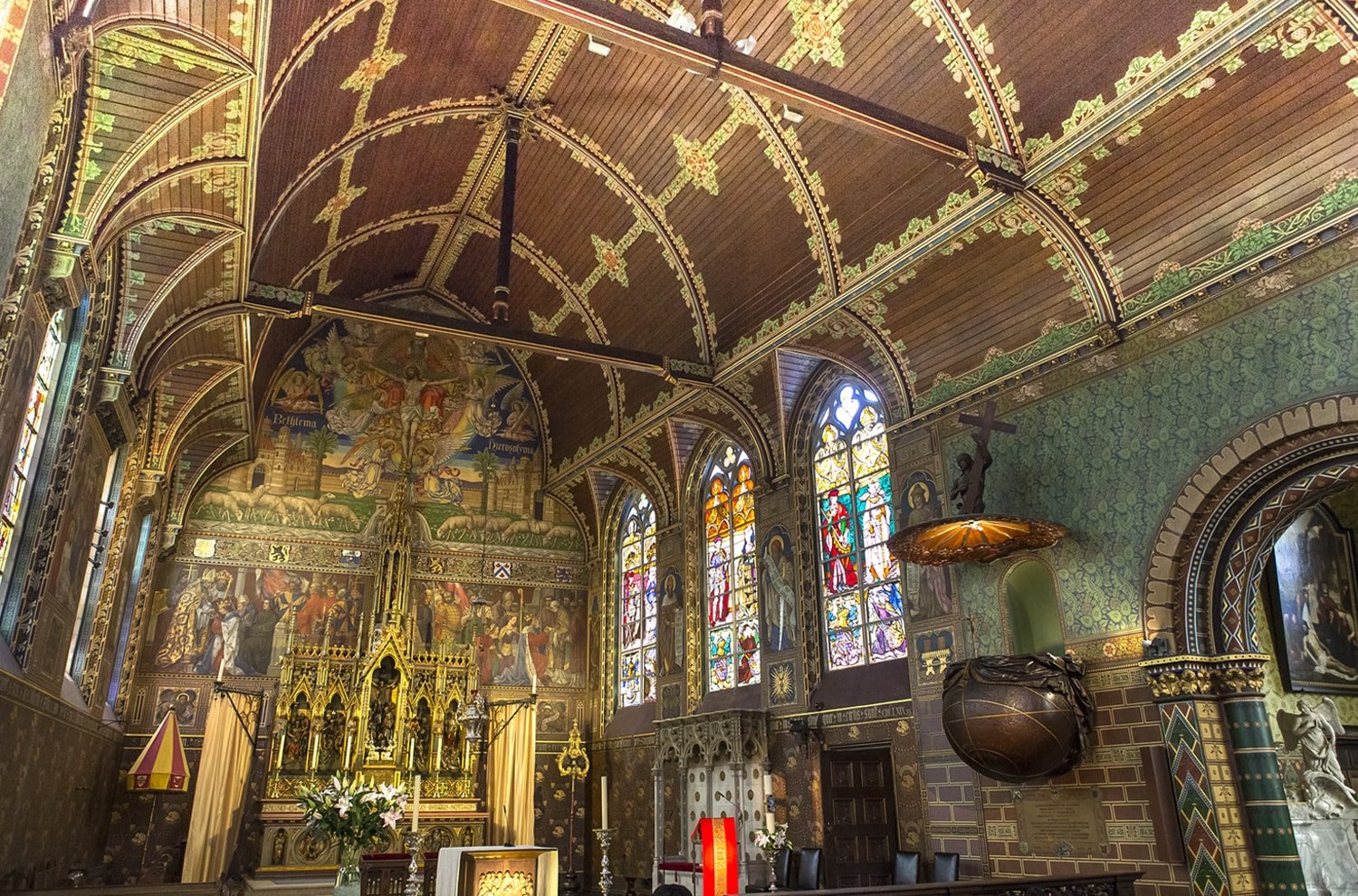
The basilica, austere in parts, as well as ostentatious in other, houses one of Europe’s precious relics, the Holy Blood of Christ himself.
The sombre Romanesque features are visible prominently in the 12th century Lower chapel. It also houses a poignant 14th century Pieta and a statue of Christ carved in the crypt. An elaborate stairway in Gothic, leads to the Upper Chapel that is decorated lavishly. The chapel had to be rebuilt twice, once after it was destroyed by Protestant iconoclasts in the 16th century and the then by French Republicans in the 18th century. The Upper Chapel is closed to visitors during Eucharistic Mass on Sunday 11 to noon. The stain-glassed windows were also replaced twice, once in 1845 and once again after an explosion in 1967, the latest restoration done by the famous Bruges painter, De Loddere.
A vial thought to contain a few drops of blood of Christ is the basilica’s namesake attraction. It was brought from Jerusalem to Bruges in 1149 by Derick of Alsace on his return from the Second Crusade. The vial is displayed every Friday in the Lower chapel between 8:30 and 10 am, and in the Upper Chapel between 10 to 11 am and 3 to 4 pm. It becomes the centrepiece on Ascension Day, a major medieval pageant in which it is carried through the streets of Bruges – De Heilig Bloodprocessie (Process of the Holy Blood).
Choco-Story
The opening times and entrance fees for both these gastronomical museums are the same.
Sint-Janshuismolen and Koeleweimolen
